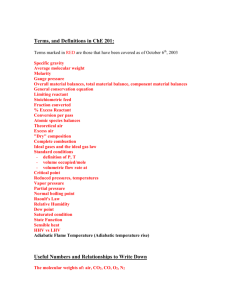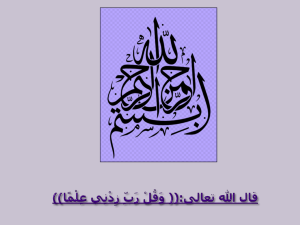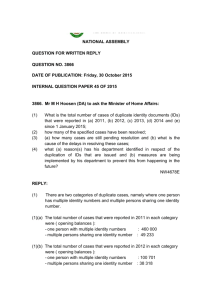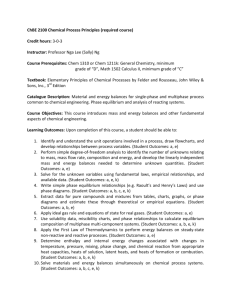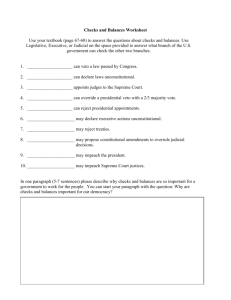CHEN2100 Principles of Chemical Engineering
advertisement
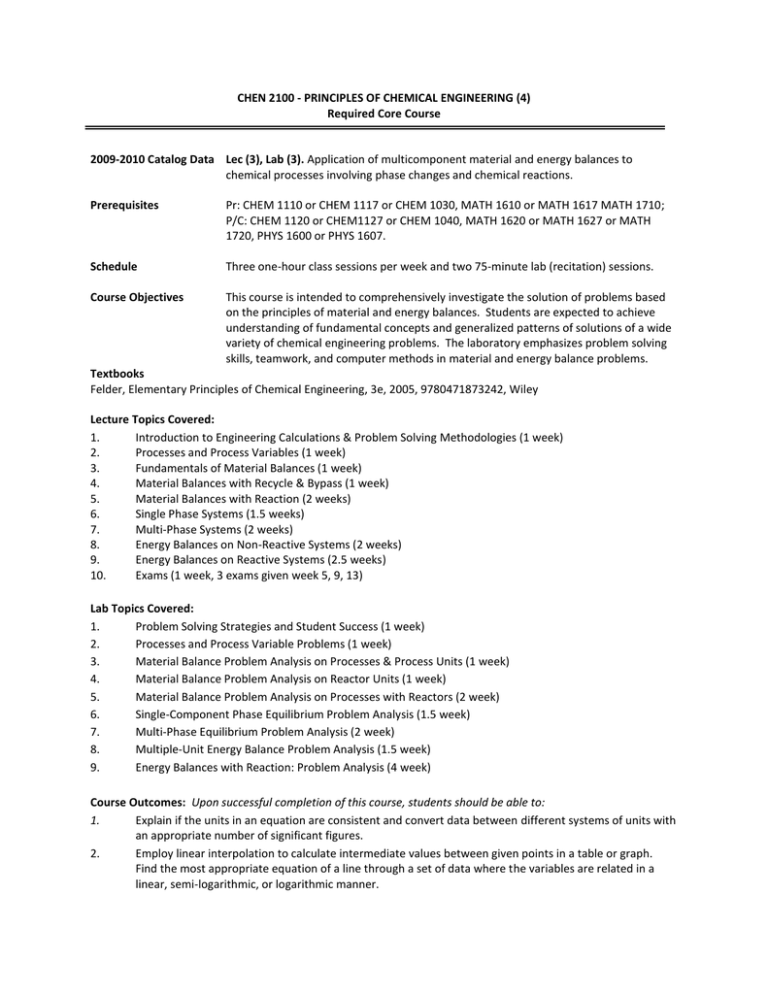
CHEN 2100 - PRINCIPLES OF CHEMICAL ENGINEERING (4) Required Core Course 2009-2010 Catalog Data Lec (3), Lab (3). Application of multicomponent material and energy balances to chemical processes involving phase changes and chemical reactions. Prerequisites Pr: CHEM 1110 or CHEM 1117 or CHEM 1030, MATH 1610 or MATH 1617 MATH 1710; P/C: CHEM 1120 or CHEM1127 or CHEM 1040, MATH 1620 or MATH 1627 or MATH 1720, PHYS 1600 or PHYS 1607. Schedule Three one-hour class sessions per week and two 75-minute lab (recitation) sessions. Course Objectives This course is intended to comprehensively investigate the solution of problems based on the principles of material and energy balances. Students are expected to achieve understanding of fundamental concepts and generalized patterns of solutions of a wide variety of chemical engineering problems. The laboratory emphasizes problem solving skills, teamwork, and computer methods in material and energy balance problems. Textbooks Felder, Elementary Principles of Chemical Engineering, 3e, 2005, 9780471873242, Wiley Lecture Topics Covered: 1. Introduction to Engineering Calculations & Problem Solving Methodologies (1 week) 2. Processes and Process Variables (1 week) 3. Fundamentals of Material Balances (1 week) 4. Material Balances with Recycle & Bypass (1 week) 5. Material Balances with Reaction (2 weeks) 6. Single Phase Systems (1.5 weeks) 7. Multi-Phase Systems (2 weeks) 8. Energy Balances on Non-Reactive Systems (2 weeks) 9. Energy Balances on Reactive Systems (2.5 weeks) 10. Exams (1 week, 3 exams given week 5, 9, 13) Lab Topics Covered: 1. Problem Solving Strategies and Student Success (1 week) 2. Processes and Process Variable Problems (1 week) 3. Material Balance Problem Analysis on Processes & Process Units (1 week) 4. Material Balance Problem Analysis on Reactor Units (1 week) 5. Material Balance Problem Analysis on Processes with Reactors (2 week) 6. Single-Component Phase Equilibrium Problem Analysis (1.5 week) 7. Multi-Phase Equilibrium Problem Analysis (2 week) 8. Multiple-Unit Energy Balance Problem Analysis (1.5 week) 9. Energy Balances with Reaction: Problem Analysis (4 week) Course Outcomes: Upon successful completion of this course, students should be able to: 1. Explain if the units in an equation are consistent and convert data between different systems of units with an appropriate number of significant figures. 2. Employ linear interpolation to calculate intermediate values between given points in a table or graph. Find the most appropriate equation of a line through a set of data where the variables are related in a linear, semi-logarithmic, or logarithmic manner. 3. 4. 5. 6. 7. 8. 9. 10. 11. 12. 13. 14. 15. 16. 17. 18. 19. Explain the concepts of mass, density, specific gravity, chemical composition, concentration, pressure and temperature as used to characterize process operations. Construct and label a flow chart from a written description of a chemical process and calculate the flow rate of process streams from mass, molar and volumetric units given appropriate data. Explain the fundamental concepts underlying general mass and energy balance equations. Analyze, develop and solve mass balances for processes involving single and multiple process units for process operations without chemical reaction. Explain the concepts of recycle, purge, bypass, closed (batch) and open (flow) systems, accumulation, steady state and transient operations, and basis of calculations. Apply these concepts when developing and solving mass balances. Explain the concepts of limiting reactant, excess reactants, conversion, stoichiometric ratio, extent of reaction, atomic species balances, yield, and selectivity. Apply these concepts when developing and solving mass balances involving reactive systems. Employ the ideal gas law to calculate thermodynamic properties (P, V, n, and T) of pure gases and gas mixtures applying the concepts of partial pressure, gauge and absolute pressure, relative and absolute temperature. Distinguish between partial pressure and vapor pressure. Calculate the properties of single component real gases using generalized compressibility charts. Calculate the properties of superheated and saturated steam, vapor-liquid mixtures of steam and liquid water, and subcooled water using the steam thermodynamic tables. Calculate the molar composition of the gas phase for saturated and unsaturated gas-vapor systems in terms of relative saturation or absolute composition using tabulated vapor pressure data, vapor pressure figures (such as Cox chart) and empirical equations (such as Antoine equation). Calculate the vapor and liquid compositions of binary multiphase systems using Raoult’s Law. Explain the concepts of heat, work, kinetic energy, potential energy, internal energy, enthalpy, intensive and extensive properties, thermodynamic state, process path, state and path functions, reference state, and heat capacity. Apply the first law of thermodynamics to a simple closed system undergoing a change from an initial state to a final state and solve for the unknown energy term. Perform energy balances on a simple open system to calculate the quantity of heat or work transferred to or from the system and the change in enthalpy, kinetic and potential energy in any stream. Analyze, develop and solve energy balances for processes with a phase change. Calculate the heat of reaction using standard heats of formation and standard heats of combustion. Analyze, develop and solve energy balances for processes involving single and multiple process units for process operations with chemical reaction. Contribution of Course to Meeting ABET Criteria 5 (Curriculum) Math and Basic Sciences Engineering Topics General Education 0 Credits 4 Credits 0 Credits Program Outcome Level of Coverage A S Relationship of Course to Program Outcomes (PO’s) B C D E F G1 G2 H I I I S I I I I Date of Preparation and Person(s) Preparing This Description: February 5, 2010: Mark E. Byrne I I J I K I
